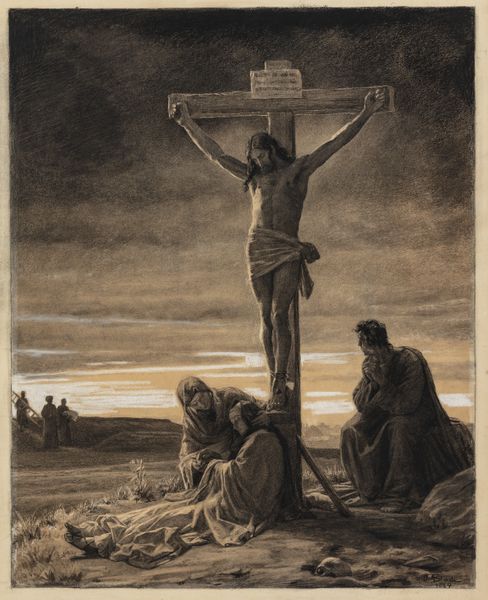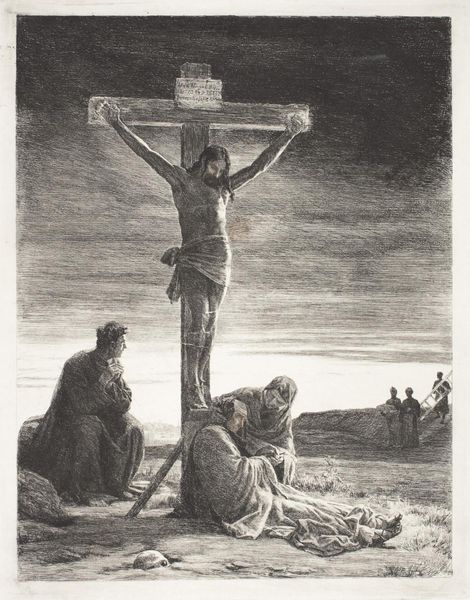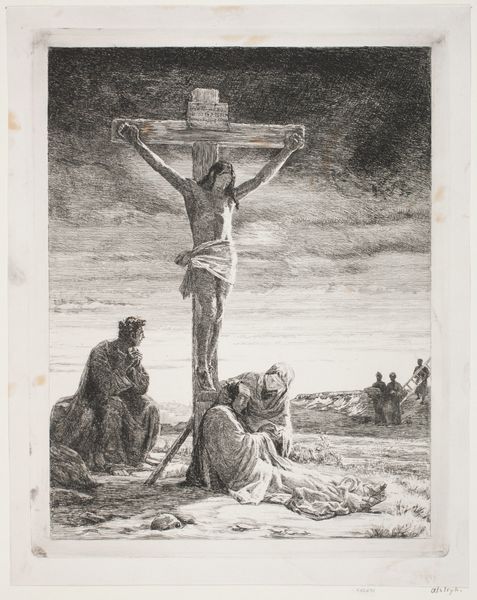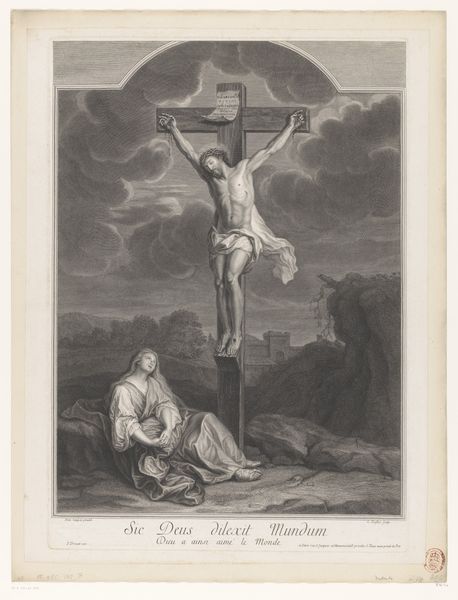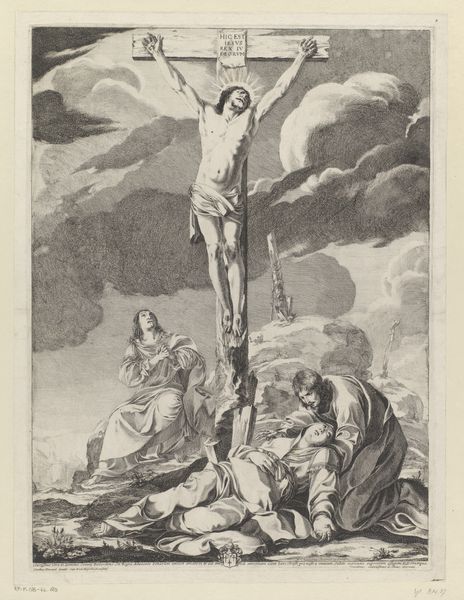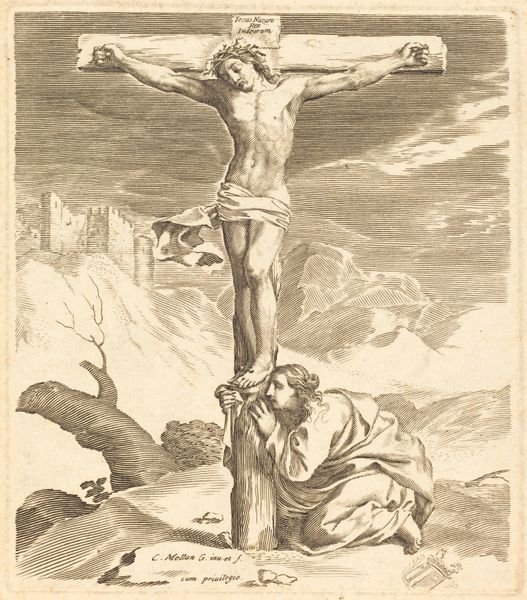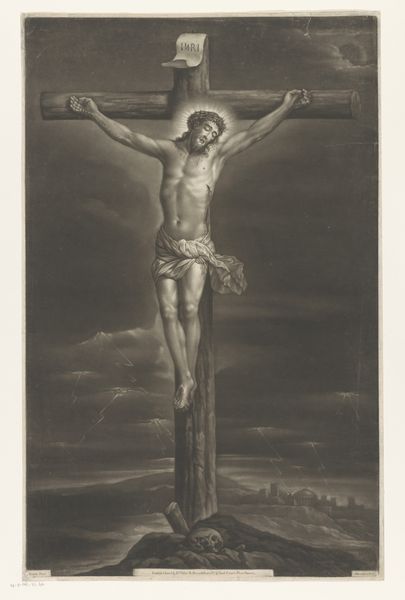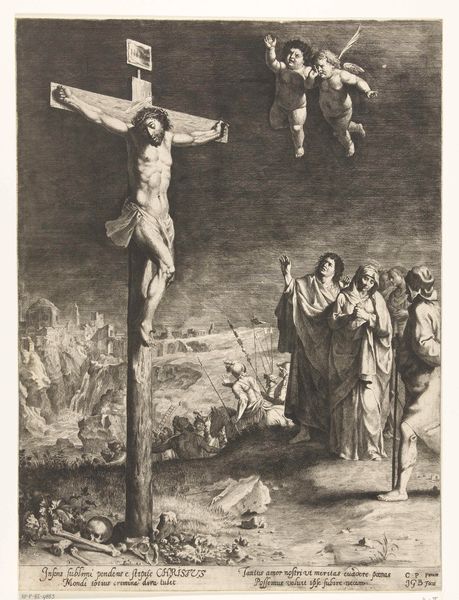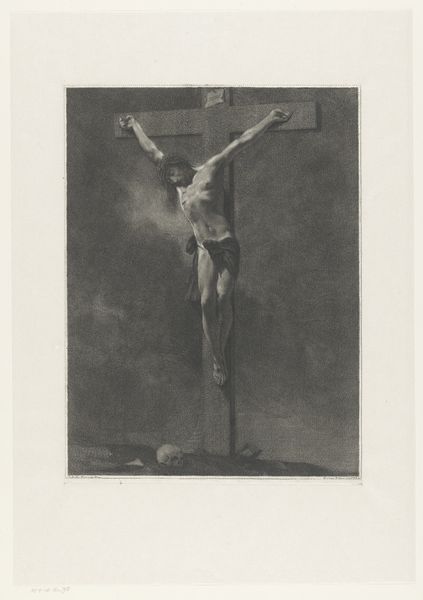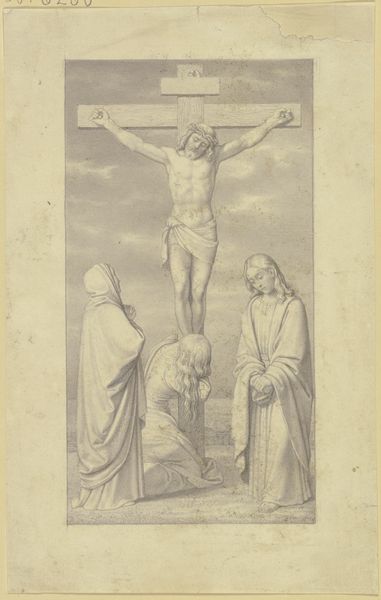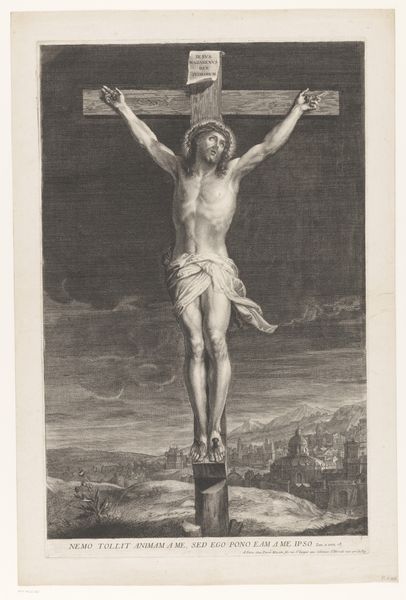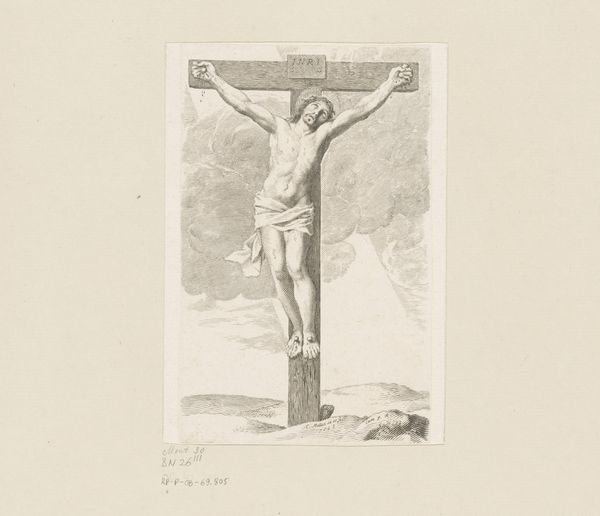
print, charcoal, engraving
# print
#
charcoal drawing
#
19th century
#
charcoal
#
history-painting
#
engraving
#
realism
Dimensions: height 330 mm, width 265 mm
Copyright: Rijks Museum: Open Domain
Curator: This stark charcoal drawing is entitled "Christus aan het kruis," or Christ on the Cross, created in 1884 by Carl Bloch. Editor: My immediate feeling is desolation, just utter emptiness. The grayscale amplifies it, and it's as though all color and all hope have been drained from this landscape. Curator: The image certainly speaks of finality. Let’s consider Bloch’s choice of charcoal, a relatively simple medium, to depict such a profound scene. He couples it with printmaking, an unusual medium, given it’s considered religious iconography. What are your thoughts about the technical and societal relevance? Editor: The labor intensiveness interests me here. Printmaking and the detail offered by charcoal involve preparation, technique. These processes involve collaboration: charcoal production and distribution; engraving the print itself. Where does it originate, where does it circulate, and how affordable would a print like this have been? Curator: That’s a potent reading. I can imagine copies reproduced and widely available. But there’s a paradox isn't there? The artwork's very replicability diffuses its emotional intensity. This version becomes one of many rather than the defining, iconic moment. I keep being drawn to the quiet individuals grouped around the cross base as witnesses of profound emotional significance and enduring impact on civilisation. Editor: Exactly! And look at how Bloch captures their mourning using relatively crude yet deeply expressive strokes, so much can be revealed in just charcoal or via etching. And of course the symbolic resonance is potent because that's where raw emotion meets organized religion and economy in society. I think looking at what materials he had access to can inform us just as well as biblical context. Curator: True. These choices underscore how earthly, or materially anchored, the depicted suffering truly is. By reminding us of labor, commerce, of our own mortality in many ways. Editor: I feel, at the end of our conversation, I know a bit more about Bloch and his own views, not only what a crucifixion meant at the time and its impact on individuals, but to see it in more modern terms—where did those art materials originate and what were their effects at the time! Curator: Indeed. Perhaps it allows us a modern viewpoint to consider the interplay between divinity, material realities, and personal response, offering a space to meditate about art.
Comments
No comments
Be the first to comment and join the conversation on the ultimate creative platform.

